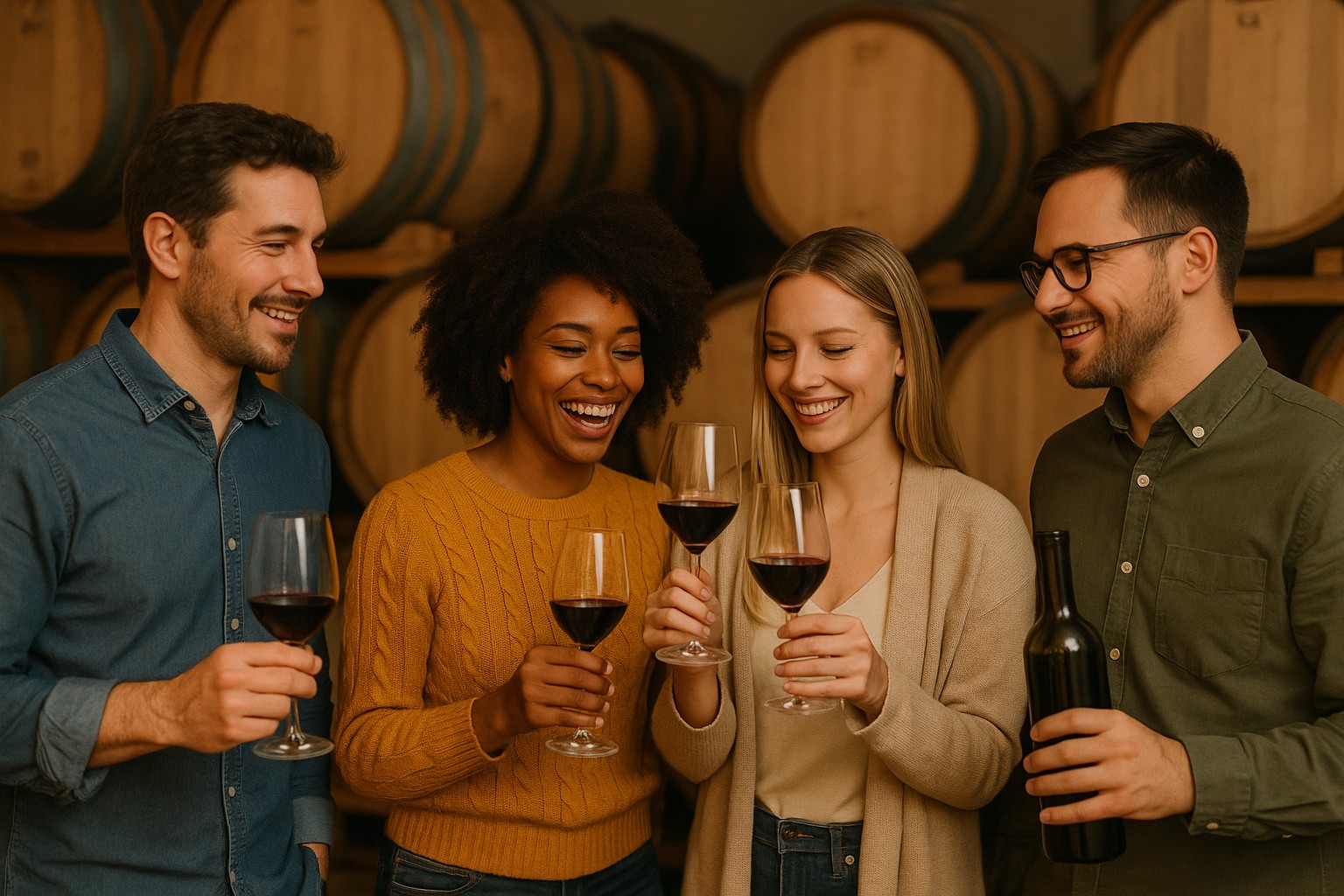
Key Highlights
-
Wine is mainly made from fermented grape juice. Grape varieties like Cabernet Sauvignon, Pinot Noir, Chardonnay, and Sauvignon Blanc give wine its unique flavors.
-
There are five main types of wine: red, white, rosé, sparkling, and dessert wines.
-
Wine tasting looks at what the wine looks like, its smells, and how it tastes. Taking notes helps build understanding.
-
Using the right wine glasses and journals can make the tasting experience better.
-
Pairing food with wine and exploring different regions can help you enjoy the variety of wine more.
-
Learning about wine is about having fun, gaining knowledge, and finding your own favorite tastes.
Introduction
The basics of wine offer an interesting way to enter the world of wine. Beginning your wine education journey is a fun chance to find out what turns a simple drink into something special. Whether you like red or white, strong or light flavors, there are many options in the world of wine. In this blog, you will learn what you need to begin your adventure. You will discover different styles, tools, and tasting tips that will help you enjoy the complexity in your glass.
Understanding the World of Wine
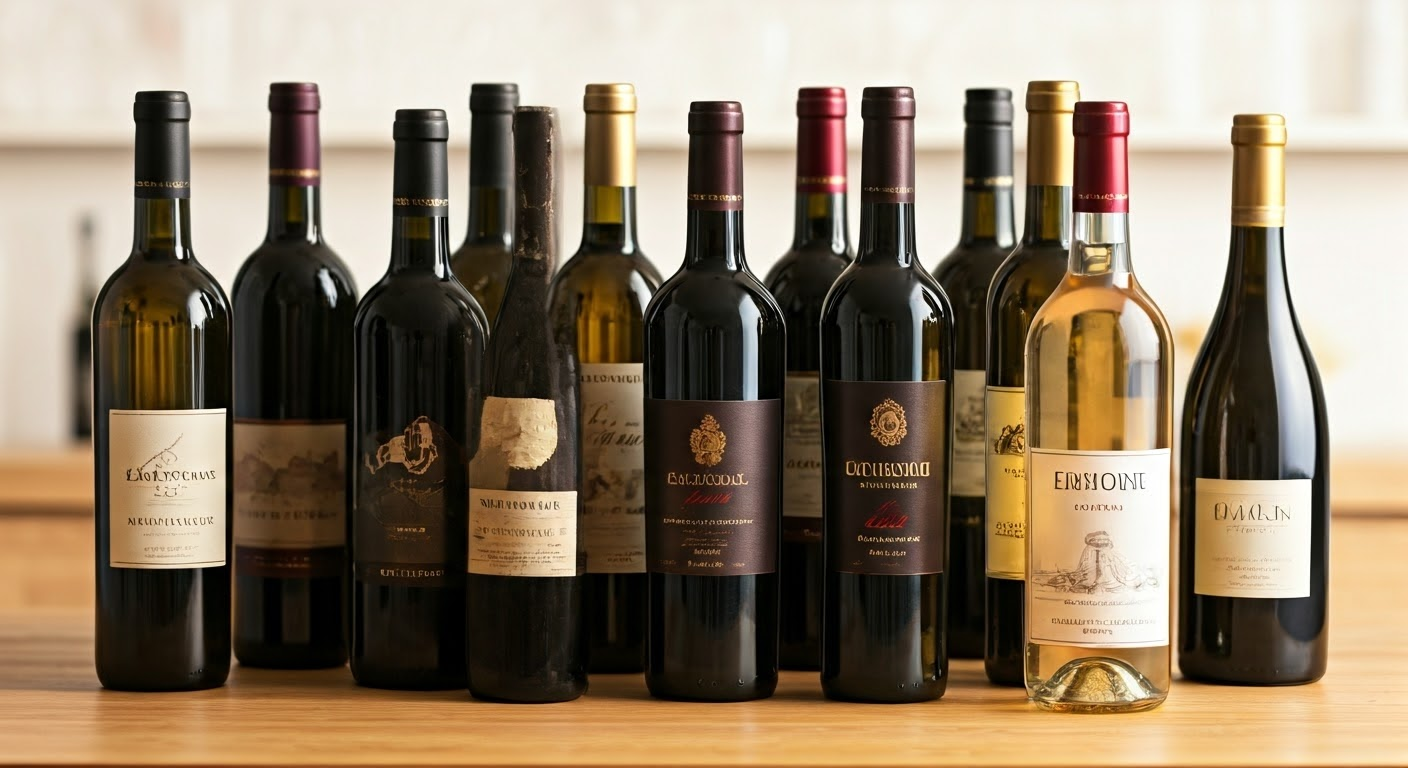 Wine is a unique drink that mixes art, soil, and science. It all begins with different grape varieties. Each type of grape has its own special flavors. These flavors come from their thick skins, traits, and the places where they grow. The Latin name for these grapes is Vitis vinifera. This name refers to the main types of grapes used in commercial production across different areas.
Wine is a unique drink that mixes art, soil, and science. It all begins with different grape varieties. Each type of grape has its own special flavors. These flavors come from their thick skins, traits, and the places where they grow. The Latin name for these grapes is Vitis vinifera. This name refers to the main types of grapes used in commercial production across different areas.
There is a lot to explore in the five main types of wine: red, white, rosé, sparkling, and dessert wines. Each type reflects its unique production method and the culture behind it. This means that looking into wine involves understanding both the regions and the flavors.
Importance of Wine as a Cultural Element
Wine is not just a drink. It is an important part of culture with a rich history. Old World regions like France, Italy, and Spain have their own winemaking styles. These styles have been shaped by hundreds of years of practice. Each bottle, from Bordeaux reds to Tuscany's Chianti, reflects their deep heritage and traditions.
New World regions, like the United States and South Africa, change the feel of wine with fresh and creative ideas. They usually make wines that are fruity and simple to enjoy. This variety adds to the excitement of the world of wine.
Wine has a long history. It mixes different national flavors with local soil, called terroirs. It’s both a farm product and a way for people to socialize. This also shows how wine reflects the art of different cultures. Learning about wine goes beyond just the taste. It's also a chance to explore culture.
Overview of Wine Varieties and Styles
Wine has many types and styles. There is something for everyone. Red wines are made from black grapes. They can be light-bodied like Pinot Noir or bold like Cabernet Sauvignon. Red wines often have more tannins and a longer finish. This gives them a richer flavor.
White wines can be made from white grapes or even black grapes. They range from the light and fresh Pinot Grigio to the rich and creamy Chardonnay. These wines are flexible and pair nicely with many types of food.
Rosé wines combine red and white grapes. They are known for their bright fruit flavors and light body. Sparkling wines have bubbles that make them feel elegant. Champagne is the most well-known type. For sweet moments, dessert wines like Sherry or Port are thick and sweet. Each type of wine encourages you to discover your favorite smells, tastes, and feel.
Essential Tools for Wine Tasting
 Wine tasting is more enjoyable with some important tools. You really need the right wine glasses. The shape of the glass can affect how the wine looks and smells. Red wines work best in wider bowls. This allows them to breathe well. White wines, however, taste better in narrower glasses. This helps to highlight their smells.
Wine tasting is more enjoyable with some important tools. You really need the right wine glasses. The shape of the glass can affect how the wine looks and smells. Red wines work best in wider bowls. This allows them to breathe well. White wines, however, taste better in narrower glasses. This helps to highlight their smells.
Other helpful tools include wine journals. You can write your tasting notes and feelings in them. By noting things like aroma intensity and balance, you can learn more as time goes on. With these good tools, your wine education journey becomes easier. This allows you to enjoy every sip even more.
Types of Wine Glasses and Their Uses
Choosing the right wine glass is key for a good sip of wine. Different types of wine need special glass styles to show off their unique flavors. Red wine glasses are big and round. They help the complex smells to come out as the wine breathes. This is really important for wines with high tannins, such as Cabernet Sauvignon.
For white wines, using smaller and narrower glasses is a good choice. This type of glass helps to keep the wine bright and acidic. A wine like Sauvignon Blanc works well in this style. It keeps the crisp and floral notes fresh. Sparkling wines are best served in flutes. These glasses help to hold the bubbles and make the occasion feel festive.
Versatility is important as well. Universal wine glasses work for most types of wine, which makes them perfect for beginners. When you have the right glassware, you can enjoy every wine to the fullest, no matter the variety.
Other Essential Equipment for Wine Tasting
To enjoy wine better, you need more than just wine glasses. A good tool to have is a wine bottle opener, like a corkscrew, which is key for opening regular bottles. If you are careful, you can prevent corks from breaking or wine from spilling. This way, you keep the wine's quality safe.
Another helpful item is a decanter. It helps to add air to wine, especially red wines like Cabernet Franc or Syrah. This makes wine aromas stronger and improves the taste. You can also use sparkling wine stoppers to keep the bubbles in Champagne or Prosecco after you open them.
Keep a record of your experiences in a wine journal. This way, you can write down tasting details and observations. Writing things down helps you learn and improves your future tastings. By noting fruit flavors and floral notes, you get a better understanding and enjoyment of wine.
Preparing for Your First Wine Tasting
Preparing for your first wine tasting is about setting up a pleasant space. You will want to enjoy the tasting notes, smells, and flavors of the wines. Check the room temperature. It should be cooler for white wines and rosé. For rich red wines, the regular room temperature is perfect.
Also, pick your first wines wisely. Start with easy drinking choices like Pinot Gris or Merlot. These wines come from different places and are a good way to learn about the world of wine. This will help you feel sure and enjoy each tasty moment.
Setting the Right Environment
Creating a comfy space is key for your first wine tasting. Choose a quiet spot with few interruptions. This way, you can focus on the details of the wine bottle. Don't forget to set the right room temperature. Red wines are best at room temperature, while white wines taste better when slightly chilled. This helps to balance their acidity.
Use nice lighting when checking the wine’s color and clarity. Natural light or neutral light is the best choice. Prepare the space with glasses, water to clean your palate, and notebooks for your tasting notes and observations.
A calm and thoughtful setting makes it easier to enjoy the experience and understand the wines better. If you are trying wine for the first time, aim to create memories that encourage you to explore more.
Selecting Your First Wines
Finding beginner-friendly wines can help you learn more about wine easily. Start with easy drinking red wines. Fruity choices like Merlot or Gamay have good flavors. They aren’t too strong on tannins, which makes it easier for you to enjoy.
When choosing white wines, consider balanced options like Pinot Grigio or Vermentino. They are smooth and have soft acidity. It’s good to try new wine styles from different regions. The place they come from can change their flavors. For instance, wines from Northern Italy might have hints of green fruit. Meanwhile, wines from South Africa could taste richer.
Always pick wines from trusted makers to guarantee good quality. These simple choices can boost your confidence and invite you into the world of wine.
Step-by-Step Guide to Tasting Wine

To enjoy wine more, it’s good to have a simple plan. Start by looking at the wine. Check its color and clarity. This can help you guess what grape varieties are in it, like a rich cabernet sauvignon or a bright pinot grigio. Next, swirl the wine gently and take a smell. This helps you notice the wine aromas. When you taste, be curious. Pay attention to how sweet it is, the acidity, and the tannins. Finally, write down what you notice. This will help you learn about different wines and make your taste for outstanding wines better.
Step 1: Observing the Appearance
Looking closely at a wine’s look can tell you a lot about its quality and features. First, tilt the glass against a white background. This makes it easier to see the wine’s color, clarity, and thickness. Light reds, like Pinot Noir, often have lighter colors. On the other hand, deeper reds, like Cabernet Sauvignon, show more intense colors. While you look, pay attention to the wine's legs. These are the droplets that form on the inside of the glass. They can give clues about its alcohol level and body. Noticing these details can really improve your tasting experience. It can also help you understand different wine styles better.
Step 2: Smelling the Wine
Aromas are very important in wine tasting. They give us a lot of information about the wine's character. First, hold a clean wine glass up to your nose. This stops other smells from getting in the way. Take a deep breath and notice the different aromas in the wine. You might catch fruity notes like berry or citrus. There could also be more complex smells, like flowers or herbs. This helps you identify grape varieties, like Cabernet Sauvignon or Pinot Noir. It also prepares you for the flavors ahead. Smelling the wine makes the tasting experience even better.
Step 3: Tasting and Assessing the Wine
Sip the wine slowly. This helps you enjoy its unique flavors. Pay attention to the first tastes. They can come from juicy fruit flavors, layers from grape skins, and various acidity levels. Think about the wine’s body. Is it full-bodied with high tannins, or light and fresh with medium tannins? Notice the finish—does it last a while, or does it fade quickly? Each sip gives you important clues about the winemaking style and the wine's origin. This helps you appreciate different grape varieties and regions. Enjoy this as part of your wine education journey.
Step 4: Recording Your Observations
Capturing your thoughts about each wine is very important for improving your tasting skills. You can use a simple notebook or a tasting app to write down what you notice about aroma intensity, flavor notes, and mouthfeel. It’s useful to identify grape varieties, like cabernet sauvignon or pinot gris, and also traits like acidity and tannin levels. This helps you keep a personal record of what you like. Taking notes not only improves your understanding of different styles of wine, but it also helps you build a better palate for future tastings. Enjoy this part of your wine education journey!
Developing Your Wine Palate
Cultivating a fine wine palate means getting to know different grape types and their unique flavors. Start by tasting both red and white wines. For example, enjoy the fruity notes of Cabernet Sauvignon and the lively acidity of Sauvignon Blanc. Notice how the wine's sweetness and dryness mix together. Also, pay attention to how different winemaking styles change the feel of the wine. As you learn, try wines from various regions. Doing this will help you understand the different styles and appreciate the rich complexity in each bottle.
Understanding Flavor Profiles
Flavors in wine come from various grape types, places, and methods of making wine. When you read the tasting notes, you'll find a wide range of flavors. These go from the fruity taste of Cabernet Sauvignon to the floral notes of Sauvignon Blanc. Each type of grape has unique traits. For instance, red grapes like Pinot Noir have thick skins. This helps create the wine's tannin structure. Smelling the aromas can reveal flavors, like green bell pepper in a Cabernet Franc. By understanding these flavor profiles, you can enjoy different wines more. It also helps you find the best food pairings.
How to Identify Balance and Texture in Wine
Evaluating balance in wine means looking at its acidity, tannins, and sweetness. A good wine mixes these parts well. This creates a nice feel in your mouth. The texture of wine depends on the type of grape and how it is made. For instance, full-bodied red wines often feel smooth. On the other hand, light-bodied whites usually taste crisp and fresh. Noticing these traits can improve your wine-tasting experience. It will help you enjoy different styles, like the high tannins in cabernet sauvignon or the easy drinking of pinot grigio.
Exploring Different Wine Regions
Different wine regions have their own special tastes and styles. In the United States, places like Napa Valley and Paso Robles are well-known for their Cabernet Sauvignon and bold red wines. Meanwhile, the cooler area of Oregon is famous for its delicious Pinot Noir. In Europe, the Old World regions, such as Bordeaux and Tuscany, are popular for their traditional methods and rich wine aromas. They produce wines like Sauvignon Blanc and Chianti. Learning about these facts makes the wine education journey more enjoyable. It helps wine lovers appreciate the variety in the world of wine.
Notable Wine Regions in the United States
California is the best wine region in the United States. It is well-known for Napa Valley's strong Cabernet Sauvignon and smooth Sauvignon Blanc. Oregon’s Willamette Valley has cool weather that is great for producing Pinot Noir. This wine usually has nice fruit flavors and a light body. Washington State is gaining popularity with its bold red wines, especially Cabernet Franc. The different growing conditions there help create unique flavors. New York's Finger Lakes are also significant, known for their Rieslings. These wines have lovely floral notes and a higher acidity, making them stand out in the country's wine scene.
Key Characteristics of European Wine Regions
European wine regions are diverse. They are shaped by climate, soil, and winemaking traditions. The Old World is well-known for grape varieties like Cabernet Sauvignon and Pinot Noir. These grapes thrive in areas like Bordeaux and Burgundy. Fine wines often have higher acidity and medium tannins. This creates a pleasing balance for those who enjoy rich flavors. In Southern Europe, the focus might be on bold red wines and lighter white wines like Sauvignon Blanc. Each region has its own special terroirs. This adds richness to the wine experience and shows the skill needed to create wines from vitis vinifera.
The Role of Food in Wine Tasting
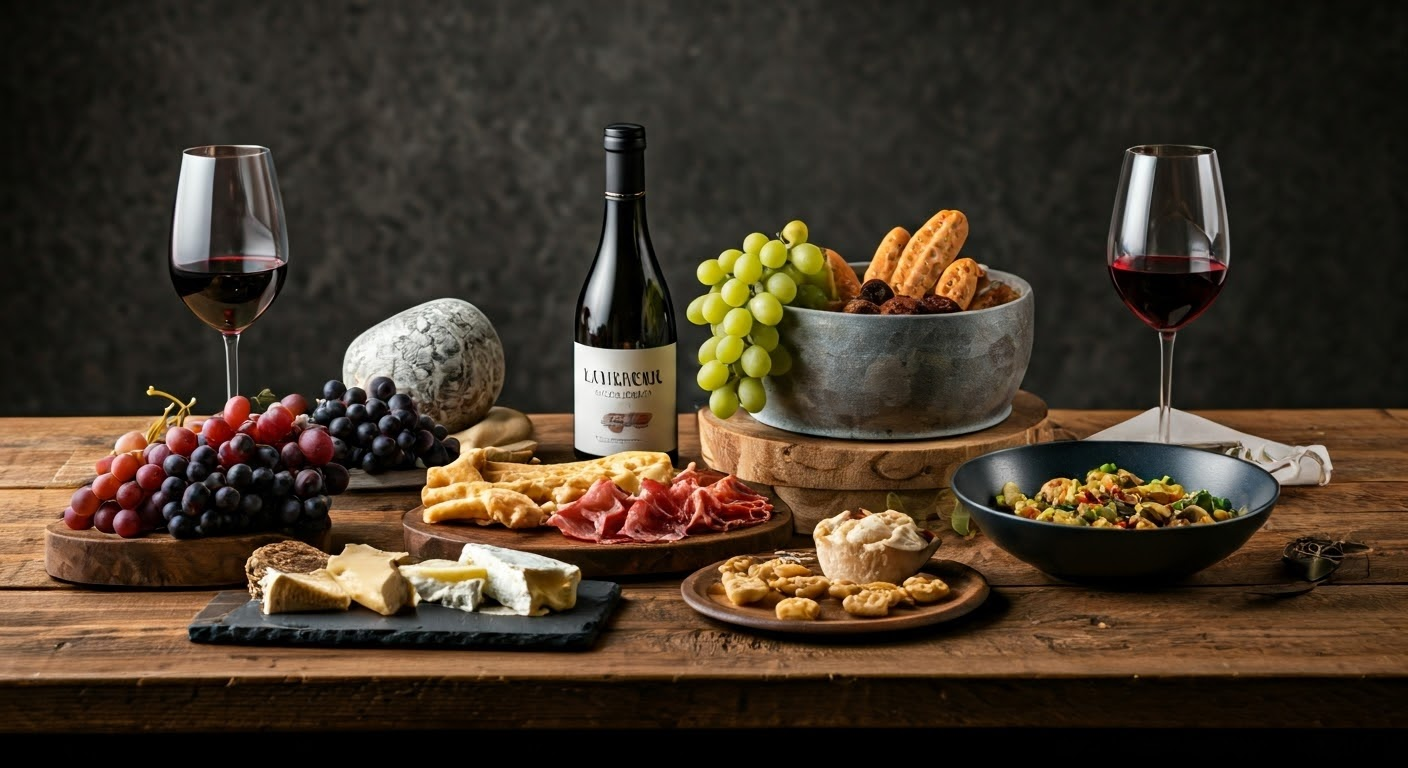
Food is very important for enjoying wine. It can make tasting even more fun. When you pick a wine for a meal, think about how the flavors go together. A good rule of thumb is to match the wine's body to how rich the dish is. For example, full-bodied reds, like Cabernet Sauvignon, pair well with hearty meats. Crisp whites, like Sauvignon Blanc, are great with lighter foods, such as seafood. Exploring different grape varieties and their pairings, like how Pinot Noir goes well with mushroom dishes, can lead to exciting discoveries. This makes the wine education journey more enjoyable.
Basics of Wine and Food Pairing
A good mix of wine and food can really make your meal better. Start by pairing strong red wines, like cabernet sauvignon, with rich meals. Lighter white wines, such as pinot grigio, go well with seafood and salads. Don’t forget about the sweetness levels; sweeter wine can highlight the flavors in spicy dishes. You can also experiment with different tastes. For example, having crisp sauvignon blanc with creamy cheeses can be a delicious surprise. Knowing these easy rules can improve your experience and make every meal feel special.
Examples of Congruent and Contrasting Pairings
Choosing the right wine for your food can improve your meal a lot. A zesty Sauvignon Blanc pairs nicely with seafood and highlights its fresh taste. However, if you use a rich Cabernet Sauvignon with light white fish, it can overpower the delicate flavors.
A light Pinot Grigio goes well with a fresh salad. It brings out the wine’s crisp and fruity taste. On the other hand, a bold Syrah pairs nicely with buttery lobster. This creates an interesting mix, combining the rich flavor of the lobster with the spicy notes of the wine.
Building Your Wine Collection
Curating a wine collection can be a fun journey. It allows you to explore different grape varieties and styles. Start with a few outstanding wines. For example, you can try a cabernet sauvignon or a crisp sauvignon blanc. These choices will help you create a strong base. Consider investing in wines from famous regions. You might pick bold reds from northern Italy or tasty pinot grigio from the United States.
Storage is key. Maintaining the right temperature and humidity is essential for your bottles to age properly. This will help them grow richer flavors and aromas with time. Enjoy your collecting!
Tips for Buying and Storing Wine
Choosing a bottle of wine means you need to think about things like grape varieties, winemaking style, and where the wine comes from. Look for wines that match your taste. You might enjoy a cabernet sauvignon with high tannins or a light pinot grigio. For storage, keep the wine in a cool place away from sunlight. A temperature of about 55°F is good. A wine cellar or a special wine fridge helps keep the nice smells and flavors safe over time. Store the bottles sideways to keep the corks wet. This prevents oxidation. By doing this, you can ensure that both new and old wines stay tasty.
Creating a Diverse Wine Cellar
Cultivating a diverse wine cellar means choosing different styles and grape varieties from several regions and winemaking methods. You should have a good mix of red wines, white wines, and sparkling choices. Include easy drinking options like Pinot Grigio as well as more complex ones like Cabernet Sauvignon. Consider the aging potential of some bottles because red wines with high tannins can get better over time. By including wines from important areas like Northern Italy and South Africa, you will make future tastings more enjoyable.
Attending Wine Tastings and Events
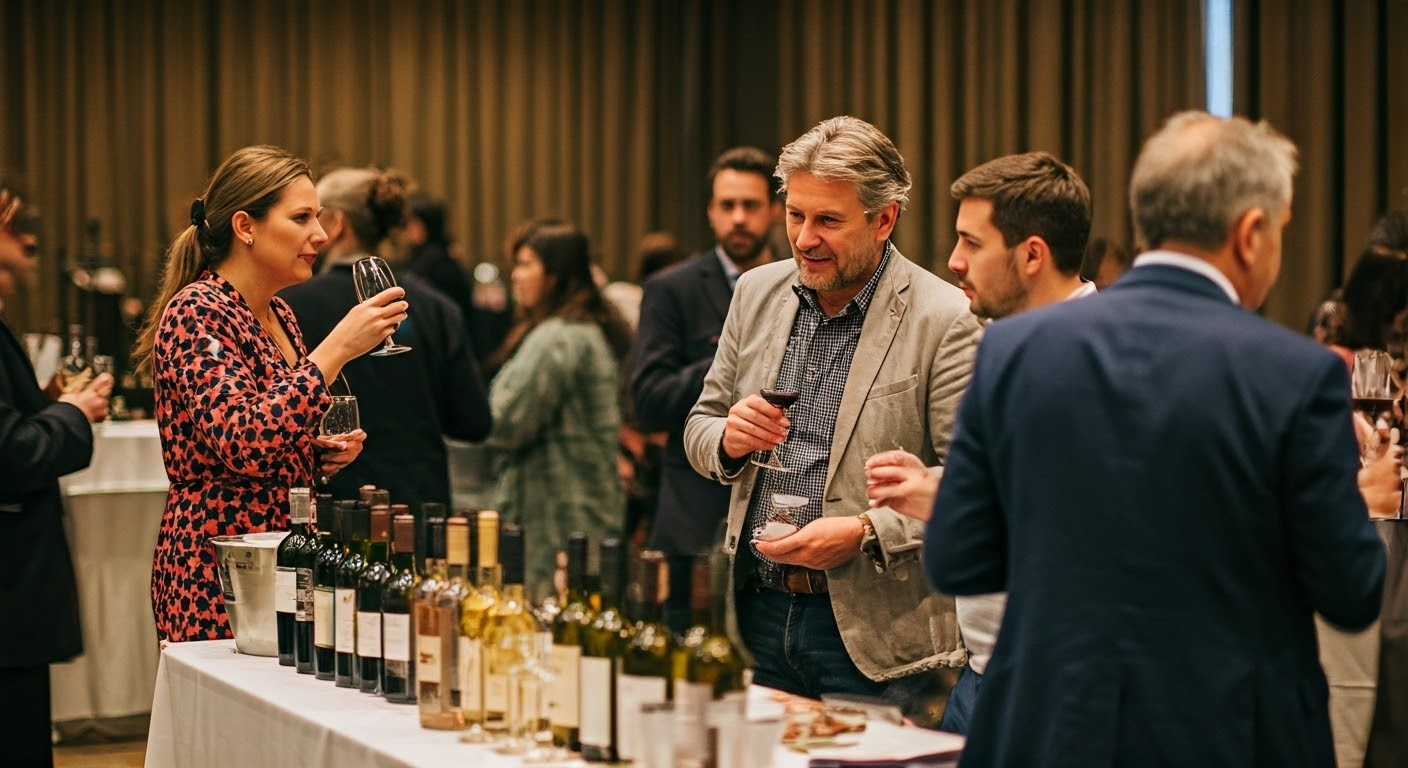
Attending a wine tasting event is a fun way to learn about wine. You can taste different grape varieties, like rich cabernet sauvignon and crisp sauvignon blanc. Friendly hosts will help you understand the tasting notes and the smells of each wine.
To prepare for these events, it’s good to know the styles of wine and the tasting rules. Sip slowly and write down your thoughts about each bottle of wine. Doing this can improve your taste and help you learn what great wine really is over time.
What to Expect at a Wine Tasting Event
Attending a wine tasting event is a great way to explore different grape varieties and styles of wine. You will get to taste both red and white wines. This includes bold Cabernet Sauvignon and refreshing Sauvignon Blanc. Your taste buds will enjoy various flavors and aromas. The friendly hosts will make the event even better. They will guide you through the tasting and share tasting notes and details about winemaking. Be ready to share what you think and what you like. You can learn more about the world of wine while having a good time with other wine lovers.
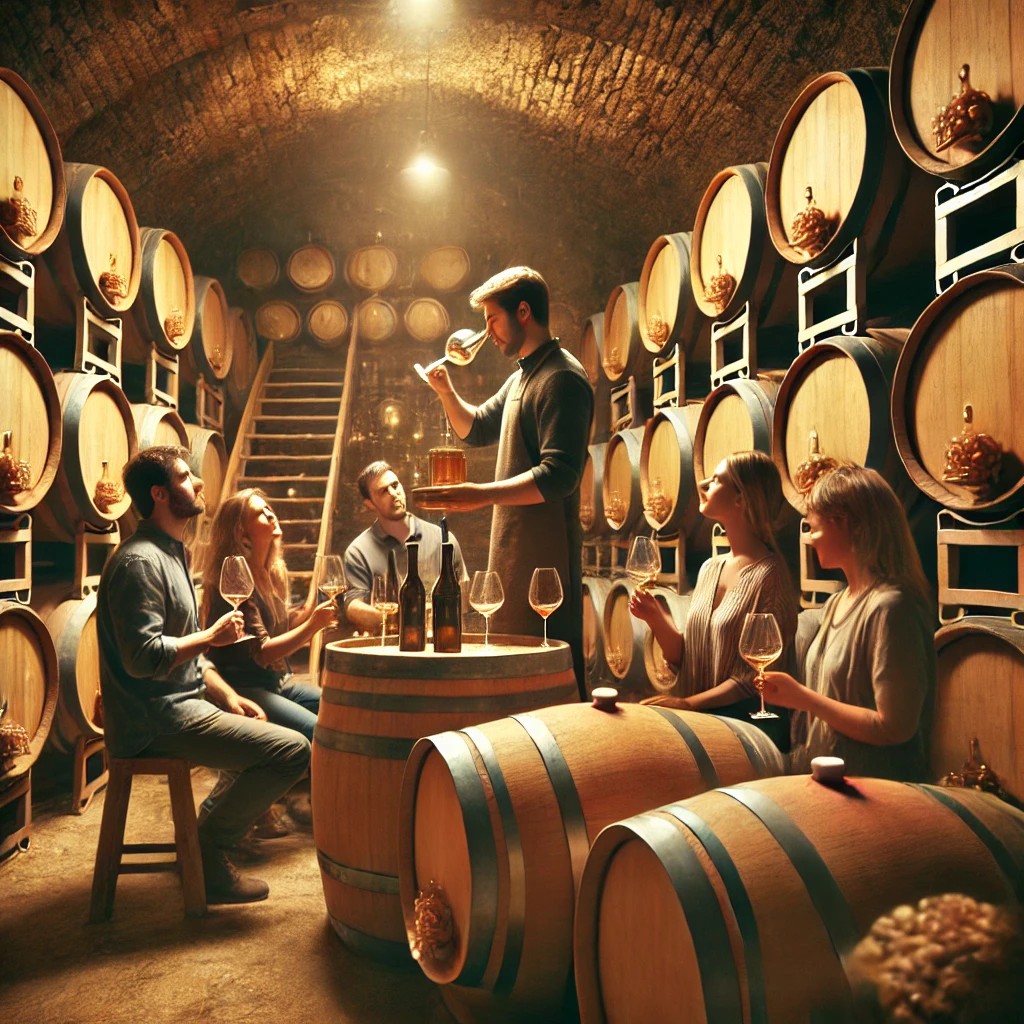
Etiquette and Wine Guide Tips for First Timers
Navigating a wine tasting can be enjoyable, but it can feel a bit overwhelming too. Start by holding your wine glass by the stem. This way, your hands will not heat up the wine. When you take a sip, focus on the wine's smell and taste. Let your taste buds enjoy all the different flavors and textures. Talking with others about the wines can make you appreciate them even more. Remember, asking questions is a good thing. Everyone is there to learn and have fun. This makes it a great opportunity for your wine education journey.
Advanced Wine Education and Resources
If you want to learn more about wine, there are many good resources to help you. You can find detailed books and online courses. These will teach you about grape varieties, wine regions, and tips for tasting so you can improve your skills. You might also join certification programs. These programs offer structured lessons about vitis vinifera and different styles of wine, like reds such as cabernet sauvignon and whites like sauvignon blanc. Joining workshops with other wine fans can also enhance your learning. This will help you grow your knowledge and connect with a lively community. Exploring these options can make your basic wine knowledge an exciting journey of learning and fun.
Recommended Books and Online Courses
To understand wine better, you can use several resources. There are books like "The Wine Bible" by Karen MacNeil. They provide good details about different grape varieties and regions. Websites like MasterClass have famous sommeliers who share tasting notes and wine aromas. These are great for wine lovers. You can also find courses on platforms like Coursera and Udemy. These courses teach about wine styles, food pairing, and winemaking techniques. This gives you a complete education. By using these resources, you can improve your wine experience and learn more about outstanding wines.
Certification Programs for Wine Enthusiasts
Many certification programs are there for wine lovers who want to learn more. Beginner courses cover the basics, such as grape varieties, tasting notes, and wine regions. This helps newcomers build a strong foundation. Advanced programs dive deeper into special topics, including how terroir impacts winemaking style. Participants can also take practical tests. These tests help them understand aroma intensity and flavor profiles better. Completing these programs not only increases knowledge but also boosts confidence in the world of wine. This makes the tasting experience much more enjoyable.
Conclusion
Starting your wine education journey opens up a world of different grape varieties, amazing smells, and rich tastes. You can enjoy a complex cabernet sauvignon or explore the fresh notes of a sauvignon blanc. Every bottle of wine gives you a special experience based on its origin and how it is made. Focus on the basics of wine: practice mindful tasting, improve your palate, and connect with the lively community around this unique drink. Over time, by trying new wines, every wine lover can discover what they enjoy and grow their passion for this lovely art.
Frequently Asked Questions
What is the best temperature to serve wine?
The ideal temperature for serving wine varies by type. White wines are often served at 45-55°F. Red wines taste better at 60-65°F. When you serve wine at the right temperature, it enhances its flavor and aroma. This leads to a better tasting experience.
How long can you keep an open bottle of wine?
An open bottle of wine can last for about 3 to 5 days. This time frame can change depending on the type of wine. Red wines tend to last longer due to their higher tannin content. In contrast, white and sparkling wines usually do not stay fresh as long. It's a good idea to store opened bottles in a cool, dark place and remember to put the cork back in.
Can wine really improve with age?
Yes, wine can improve as it gets older, but it really depends on the type. High-quality red wines and some white wines often develop better flavors and smells with age. However, not all wines are good for aging; many are better enjoyed when they are fresh. It's important to consider the varietal when thinking about how well a wine can age.
What are the most beginner-friendly wines?
Beginner-friendly wines are often smooth and simple to enjoy. Popular options include Moscato, Riesling, and Pinot Noir. These wines are less acidic and have more sweetness. This makes them ideal for new wine drinkers. They won't overwhelm your taste buds. Look into these choices to begin your wine journey.
How do I describe the taste of wine?
When you discuss the taste of wine, focus on its flavor profile. This is how sweet the wine is, its acidity, tannins, and alcohol level. Pay attention to flavors like fruit, spice, or earthy notes. You can use words such as balanced, complex, or smooth to express how the wine feels on your palate.
